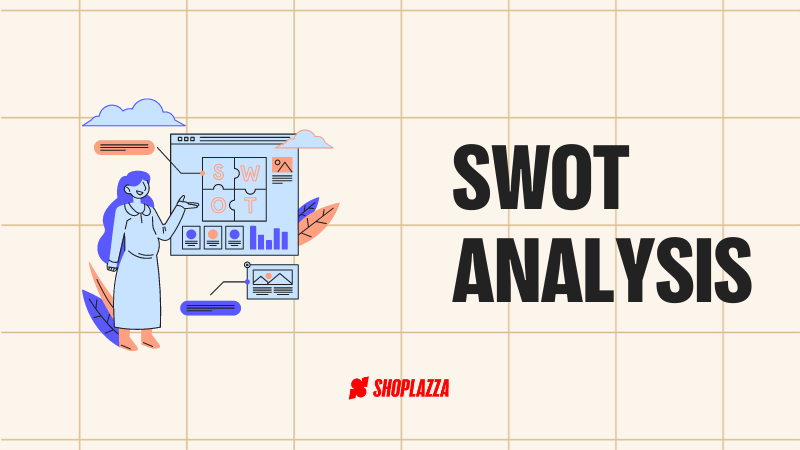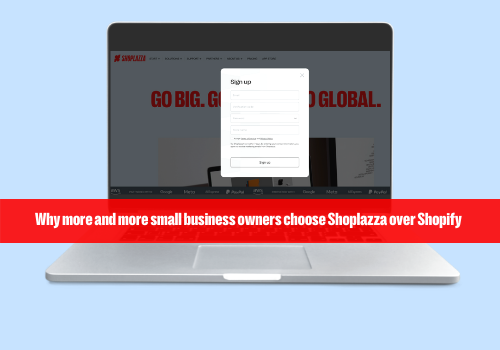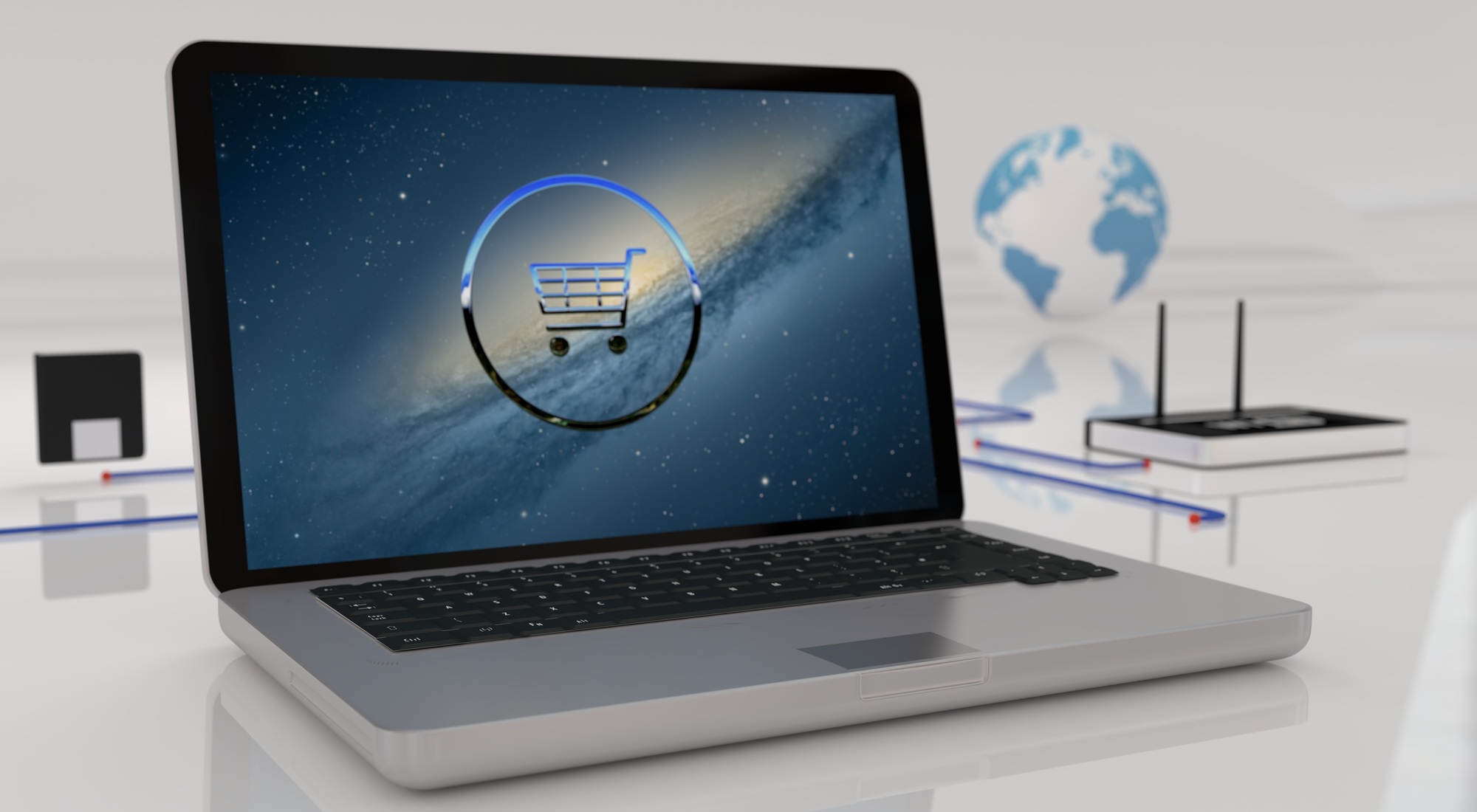Estimated reading time: 15 minutes.
Table of content:
- What is an eCommerce business model?
- Common types of business models.
- Featured eCommerce business models at SHOPLAZZA?
- Finding a business model best working for you.
- An example of a successful eCommerce business practice.
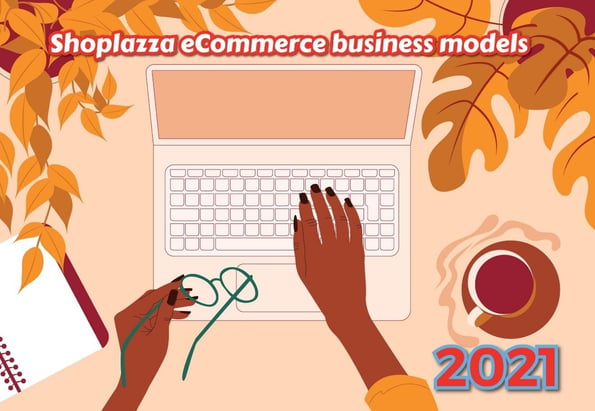
By carefully studying a recent SHOPLAZZA survey through feedbacks from our merchants around the world, one thing, as SaaS platform operator, we’ve elicited that learning new business models is essential to stay ahead under current rapidly evolving business environment. Many of our merchants told us, “Luckily, we added ePackaging business and POD to current business operation, so that we can counterbalance the loss of plunging offline sales volume by new online business leads.”
To adopt or bring in a new business model is probably one of the most critical decisions that you have to consider pursuing and integrating besides product sourcing. SHOPLAZZA is confident to support anyone who just starts a new business or any existing eCommerce owners to explore and expand a new field through the offerings of different built-in tools and business resources.
In this article, we will share high-level breakdown on available business models and resources that will help you start a new eCommerce business or integrate a new product service line to your existing operation.
There are pros and cons for each business model, depending on your existing business model, products, target market, costs and business structures, and other factors. You may find one business model more suitable for your business than others.
What is an eCommerce business model?
The term business model refers to a company's plan for making a profit. It identifies the products or services the business plans to sell, its identified target market, and any anticipated expenses. Business models are important for both new and established businesses.
In simpler terms, “business model” is a process of identifying your targets. By breaking down to a more detailed bullet points: target markets, target audiences, products or services to sell, cost structure, business framework.
Business models are essential to new and existing eCommerce business owners to consider and examine the current plans for maintaining a sustainable advantage and market presence, as well as discovering new opportunities.
Common types of business model
There are four main types of eCommerce business models that illustrate the transactions between the business and the customers.
Business-to-consumer (B2C)
The business-to-consumer (B2C) business model refers to commerce between a business and an individual consumer. For example, when you buy a shirt from a retailer online. While this includes brick-and-mortar business, it’s also become associated with ecommerce, or retailing.
Business-to-business (B2B)
Business-to-business (B2B) refers to any commerce between two businesses. For example, when a SaaS company sells software to another company. Wholesale retailers typically fall under this category, versus companies that sell at a retail level.
Brands can also include business-to-business offerings as a retailer. For instance, a coffee brand can sell its beans to shoppers on its website (B2C), but also sell in bulk to coffee shops (B2B).
Consumer-to-consumer (C2C)
The consumer-to-consumer business model is when a consumer sells a product or service to another consumer. For example, when you sell a used laptop on Facebook Marketplace. Individual sellers often begin selling on online marketplaces then start an online store to build a brand and capture more profits.
Consumer-to-business (C2B)
The rise in the creator economy led to a spike in consumer-to-business (C2B) companies. This business model refers to when a consumer sells their own products or services to a business or organization. If you want to become an influencer or a photographer selling photos online, this is the type of business model you’d use.

Featured eCommerce business models at SHOPLAZZA
SHOPLAZZA is a global eCommerce platform offering leading SaaS web building services.
What is SaaS? SaaS, or software as a service, is a delivery model in which a centrally hosted software is licensed to customers via a subscription plan. In simpler terms, a brick-to-mortar business owner rents a physical store and pays monthly rents around few thousands of dollars to get operating space and a range of services, electricity, water, security etc.
In eCommerce world, a brick-to-mortar store owner finds the rent of physical store is unbearable, instead, he found he only has to pay a monthly subscription fee around USD$30 to $100 dollars to receive way more built-in tools and services that he needs to maintain and grow his business. In this case, SHOPLAZZA is the platform to offer not just online stores but also a range of tools and resources to let business owners succeed in virtual business environment.
SHOPLAZZA featured business models base on different product sourcing, manufacturing supply chain, shipping methods. In the following article, we will introduce several proven business models to you.
- DTC, Direct to consumer
- Dropshipping
- Print-on-demand
- Manufacturing at volume
- Crafters
- Digital products
- Selling subscription or Make money as developer
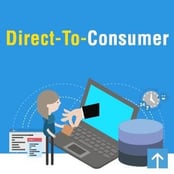
DTC direct to consumer
DTC, direct to consumer business model refers to the direct selling process from seller to consumers around the world, without through any third-parties’ platforms or retailors, such as Amazon, eBay, Esty. Because of its business nature by directly selling to end users, companies are now able to accumulate, create and manage their own sales related data, avoiding costly third-party platform charges.
If you are a manufacturer, factory owner or other type of business that manufacture or produce your own products, DTC could be a great way to sell and reach broader range of customers around the world.
Big brands like Apple, Tesla, Samsung, and many other globally tangible manufacturers adopt this model and sell directly to global consumers online or through most of the mobile sales channels. Customers can easily access, browse, and order through DTC brand product catalogs anytime and anywhere.
Over the years, SHOPLAZZA developed its unique and industrial leading DTC services offering a range of featured services to our global merchants.
The services include:
- Brand strategy design.
- Online store design and setup.
- Store operation.
- Online Ads campaign.
- Social media marketing.
Merchants benefit from SHOPLAZZA featured DTC services to focus on their product improvements, production optimization or other essential business process. SHOPLAZZA only charges a small percentage as commission from the revenue generated.
Pros
- Ownership of store data.
- Owning all business related data is essential for analysis, predict and plan. As DTC provider, you collect first-party data to personalize the business or communication offered to your customers.
- Owning all business related data is essential for analysis, predict and plan. As DTC provider, you collect first-party data to personalize the business or communication offered to your customers.
- Higher profits.
- You sell directly to your customers as manufacturer, you don’t have to share a cut with the third-party distributors.
- You sell directly to your customers as manufacturer, you don’t have to share a cut with the third-party distributors.
- Better customer services.
- You collect and respond to customers directly, therefore, it is easier and quicker to process refund, return or exchange for a customer.
Cons
- Shipping and storage costs.
- You will need to source or select the shipping carrier yourself or from SHOPLAZZA ERP platform. In some cases, some of our DTC merchants have to look for local storages in order to speed up delivery efficiency.
- You will need to source or select the shipping carrier yourself or from SHOPLAZZA ERP platform. In some cases, some of our DTC merchants have to look for local storages in order to speed up delivery efficiency.
- Marketing campaign costs.
- In many cases, manufacturers will have to explore new markets, or maintaining existing market presence by launching Ads campaign or marketing events both online and offline. Therefore, having a marketing and Ads budget
DTC manufacturers stay in full control by directly interacting with customers, it may take time to establish reliable distribution channels, or reaching target audiences. But it is a great way to create your brand and bring your presence to the world market.
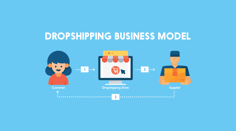
Dropshipping
As the current global pandemic may go on for a while, we have witnessed many brick-and-mortar stores in crisis. The traditional model of retail business is undergoing irretrievable changes. The huge investments in staff, warehouses and stores put a strain on brick-and-mortar companies. As the result, plenty of them have gone belly-up, and many are expected to do so.
But for eCommerce, the moving-out of traditional business model does leave a huge gap in the market waiting to be filled by different niches of eCommerce. Dropshipping is certainly one of those critical niches.
Dropshipping is a business model that allows you to sell and ship products you don’t own and don’t stock. Your suppliers could be wholesalers or manufacturers who produce the goods, warehouse, or the sellers who sell on AliExpress or Amazon, they ship products to your customers for you.
The process is simple:
- You receive an order
- You forward the order to your supplier
- Your supplier fulfills the order
At SHOPLAZZA, we offer automated dropshipping tools for anyone to quickly setup, sync product feeds and sell. Simply follow our article of "A quick guide to dropship with SKUowner from SHOPLAZZA" to get more insights and tips.
Pros
- Quick, easy and very low cost to start. The most significant advantage for Dropshippers are:
- Very low start-up cost, with SHOPLAZZA, you only need to purchase a basic monthly subscription plan around USD$20, then you are good to start with free tools which has no extra upfront or any additional app subscription charges.
- No inventory to hold or to invest, you don’t have to carry any inventory since you will only pass the orders to the sellers who will fulfill your orders. Usually, inventory could generate most substantial expenses for a new eCommerce business.
- Low risk. Even you are tight on start-up funds, you are still able to sell in volume, as long as you can well design your price scheme. There is very low financial risk since you are not bearing inventory investment or any sort of other start-up upfront costs.
- Customizable sales. Your seller or manufacturer will complete the tasks like picking, packing and shipping according to your requirements. It provides convenience and efficiency, you can source your products from AliExpress and sell to customers around the world by managing your business anywhere.
- Clear aftersales policy. Over the years, global B2C platform like AliExpress has well established and developed very clear aftersales service guidelines and policies. If your customer wishes a refund or return, they are covered by such policies.
Cons
- Product knowledge.
- Like any other business, you need to know your products, be able to check the quality. With some sellers, you can order a sample before starting to sell them.
- Like any other business, you need to know your products, be able to check the quality. With some sellers, you can order a sample before starting to sell them.
- Inventory syncing.
- Usually, it is a problem for Dropshippers to track seller’s inventory. But with SHOPLAZZA, Dropshippers sync and track inventory through our featured Dropshipping plugin Skuowner to fulfill all these functions.
- Usually, it is a problem for Dropshippers to track seller’s inventory. But with SHOPLAZZA, Dropshippers sync and track inventory through our featured Dropshipping plugin Skuowner to fulfill all these functions.
- Competition.
- Due to the low barriers, of course, there are certainly a lot of people actively engaging in this business. But you can still set yourself apart with SHOPLAZZA featured built-in tools.
With Dropshipping, you gain profits through the margin between how much you pay to your seller and how much you sell to your customer. Typically, your profit margin varies between 20% 40%, since shipping cost could vary. The bigger volume you sell or order, the lower unit shipping cost to bear.

Print on demand. P.O.D.
If you wish to enter the designer domain and sell products with your signatures, voilà, print on demand may be the suitable business model for you.
Basically, POD is to sell made-to-order products featured with your designs. It allows you to focus on the design and creation part, leave the complicated manufacturing process to the professional manufacturers. Therefore, when a customer orders a dozen T-shirts with your design and from your online store, you as the POD merchant to pass the order to a third-party printing or manufacturing services for fulfilling production, packaging and shipping.
Print on demand is similar to dropshipping, instead it focus solely on selling designs and holding no inventory for materials, no upfront investments are required.
Pros
- Exhibit your talents, your designs to the world shoppers.
- Even you have a 9-to-5 job, you can still make the design and sell them. Because you only focus on selling designs.
- Automated printing and shipping services.
- All production and fulfillment are handled by your POD supplier. But you are responsible for aftersales services.
- Low cost upfront.
- Since the nature of this business model, you pass the order to suppliers only after you receive an order from customer. You can focus on design without spending a fortune on inventory and printing equipment.
- Strength of sourcing qualified POD suppliers by SHOPLAZZA
- SHOPLAZZA is dedicated to source, select and evaluate global POD suppliers with our rigorous standards not only on qualities of production, also general work conditions of the workers.
Cons
- Cost to ship.
- Once again, it varies for different products with different carriers, also depending on the type of shipping services that suppliers choose to use. Therefore, we always recommend our merchants to communicate with POD suppliers before placing the orders.
- Once again, it varies for different products with different carriers, also depending on the type of shipping services that suppliers choose to use. Therefore, we always recommend our merchants to communicate with POD suppliers before placing the orders.
- If you are a creative design professional, print on demand is a great way to exhibit and capitalize your talents with very low entry barrier.
You can sell products like:
- Garments, T-shirts, clothes, even Yoga leggings, etc.
- Face masks.
- Bags.
- Digital watch bands.
- Pillows and blankets.
- Copies of canvas and posters.
- Cups and plates.
Depending on what you sell, you will have to select your supplier who offer the printing production matching the products that you wish to sell.
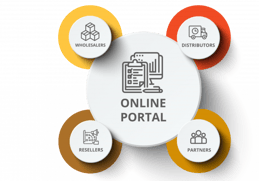
Manufacturing at volume
If you have an existing business or offline physical store, and you need to manufacture products with your labels. Your manufacturers can produce two types of labels, private labels and white labels.
Private label products are produced by a third-party manufacturer chosen by you and sold under your business name and label. You have full control on design, package, how label looks like.
White label products are also produced by a third-party manufacturer chose by you, and when you receive the goods, you resell them to various retailors under their own brands. They are generic products usually you can sell to much broader spectrum of customers.
Pros
- Lowered unit cost.
- Since your order in volume, so suppliers can usually lower the general costs for a greater profit margin to you.
- Since your order in volume, so suppliers can usually lower the general costs for a greater profit margin to you.
- Stay in control.
- Through the entire production process, you are in control to customize packaging, designing, and labeling.
- Through the entire production process, you are in control to customize packaging, designing, and labeling.
- Quality control.
- Since you order to manufacture your own products, you do gain more control of the quality.
Cons
- Minimum order quantities.
- You do need certain start-up capital to pay to manufacturer for initiating the production. Also, you may need storage for your inventory during the process.
- Selection of manufacturers.
- There is certain risk when you hire an overseas manufacturer especially when you have to pay upfront down payments to them. SHOPLAZZA collaborates with global payment vendors to establish a comprehensive risk control and dispute resolution system to ensure the fair process.

Crafters
If you craft your own products, from leather bags to artisan pottery, from hand-made jewelry to natural beauty products, you have the full control throughout the production, sales, shipment and aftersales stages.
There are some costs that you need to take into account if you craft your own products.
- Raw materials for your products, whether it is leather, clay or silver, you will need to pay upfront in order to receive them.
- The storage of raw materials and finished products, well, many of our crafters created storage at home, but it does not apply to anyone.
- Production cost, in terms of tools and equipment that you do have to calculate and compare the costs.
Throughout our experiences with crafter merchants, it is best to sell items with higher unit value or unit price.
Digital products with copy rights
Generally, if you sell non physical products like your podcast radio records, stock image, stock videos, songs etc., you may choose to distribute online, repeatedly, no inventory ever needed.
These multimedia products are usually digital files with following natures:
- Downloadable.
- Streamable.
- Transferrable.
The formats vary from MP3, videos, plug-ins, PDFs, templates, JPEGS, PNG, Vectors etc.
Pros
- Instant delivery.
- As soon as the order placed and paid, customers are able to download or stream the digital file instantaneously.
- Low overhead costs.
- Well, no inventory cost, no production cost, no shipping cost.
- Well, no inventory cost, no production cost, no shipping cost.
- Exhibit your talents to people around the world.
- Basically, you sell what you create, what you shoot or what you record. People use their cameras, voices, ideas, insights to produce economic values through online stores.
Cons
- Piracy and theft.
- There are people who steal your products and reuse to serve their own purposes. Make sure you use proper tools to protect your copyrights.
- Sales restrictions.
- Be aware that you can only sell physical products on Facebook and Instagram according to Facebook community policy.
Another significant advantage in this niche is the possibility of lowering your unit price to reach a larger sales volume, because you bear very little costs.
Selling Subscriptions or making money as a developer
The subscription eCommerce market is projected to hit $470 billions by 2025 according to recent university study. If you are developer and selling your plug-ins or apps through SHOPLAZZA AppStore, you can make money by charging customer a reoccurring monthly or annual fee to enable customer gain access to your apps or plug-ins.
